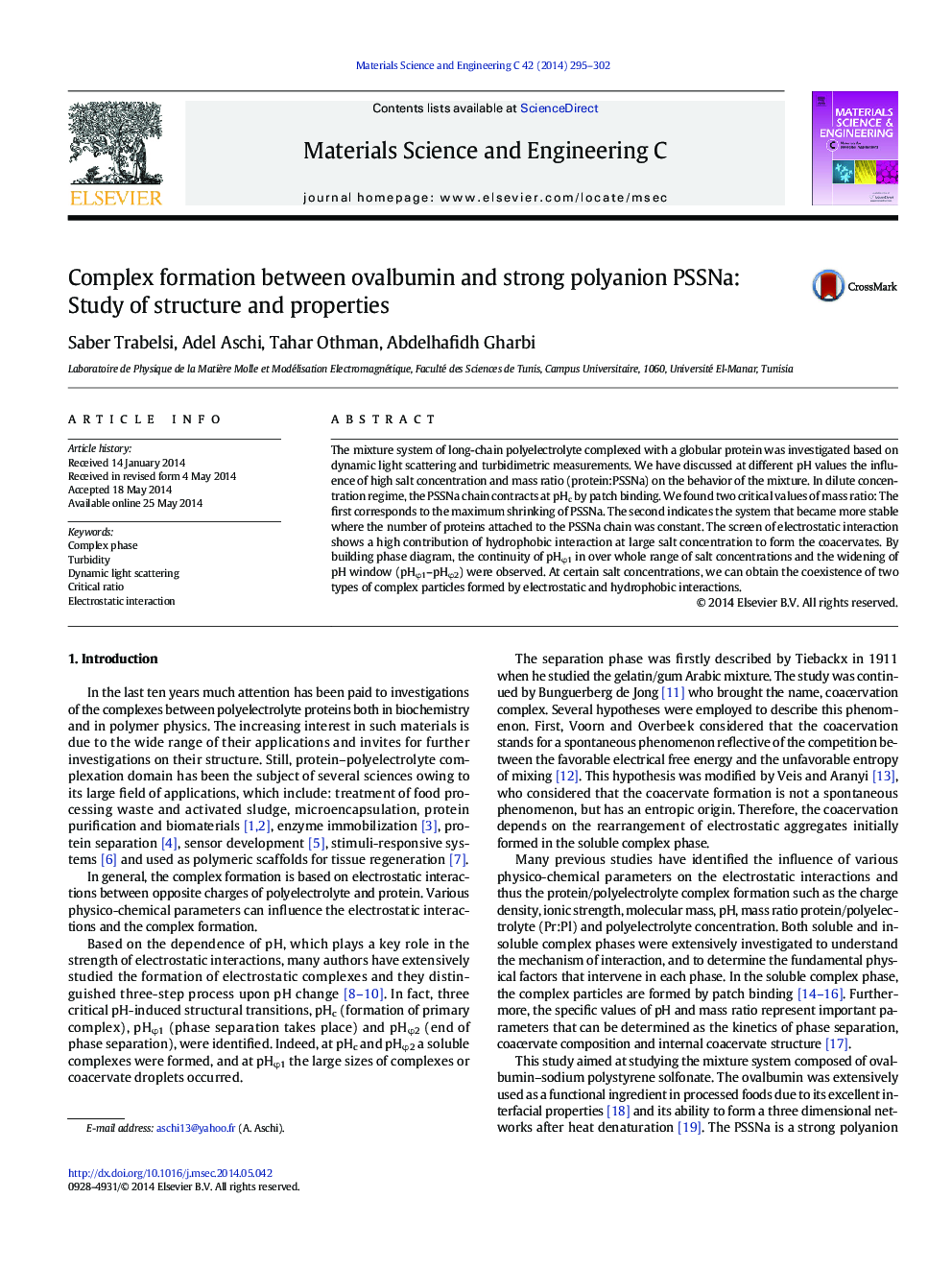| Article ID | Journal | Published Year | Pages | File Type |
|---|---|---|---|---|
| 1428639 | Materials Science and Engineering: C | 2014 | 8 Pages |
•Properties and structure of mixture formed by globular protein and polyelectrolyte.•Study the shrinkage of polyanion by adding protein in the complexe phase.•We evaluate the affinity of hydrophobic interaction to form complexes by screening the charges.•We evaluate the electrostatic properties of ovalbumin versus pH through the Poisson-Boltzmann equation.
The mixture system of long-chain polyelectrolyte complexed with a globular protein was investigated based on dynamic light scattering and turbidimetric measurements. We have discussed at different pH values the influence of high salt concentration and mass ratio (protein:PSSNa) on the behavior of the mixture. In dilute concentration regime, the PSSNa chain contracts at pHc by patch binding. We found two critical values of mass ratio: The first corresponds to the maximum shrinking of PSSNa. The second indicates the system that became more stable where the number of proteins attached to the PSSNa chain was constant. The screen of electrostatic interaction shows a high contribution of hydrophobic interaction at large salt concentration to form the coacervates. By building phase diagram, the continuity of pHφ1 in over whole range of salt concentrations and the widening of pH window (pHφ1–pHφ2) were observed. At certain salt concentrations, we can obtain the coexistence of two types of complex particles formed by electrostatic and hydrophobic interactions.
Graphical abstractTurbidity of mixture of ovalbumin/PSSNa vs pH at Pr:Pl = 10:1, cPSSNa = 0.5%, [NaCl] = 0 M and corresponding electrostatic potential contour (+ 1 kT/e (blue) and − 1 kT/e (red)) around the ovalbumin dimer. Calculation was based on PDB ID 1OVA.Figure optionsDownload full-size imageDownload as PowerPoint slide
